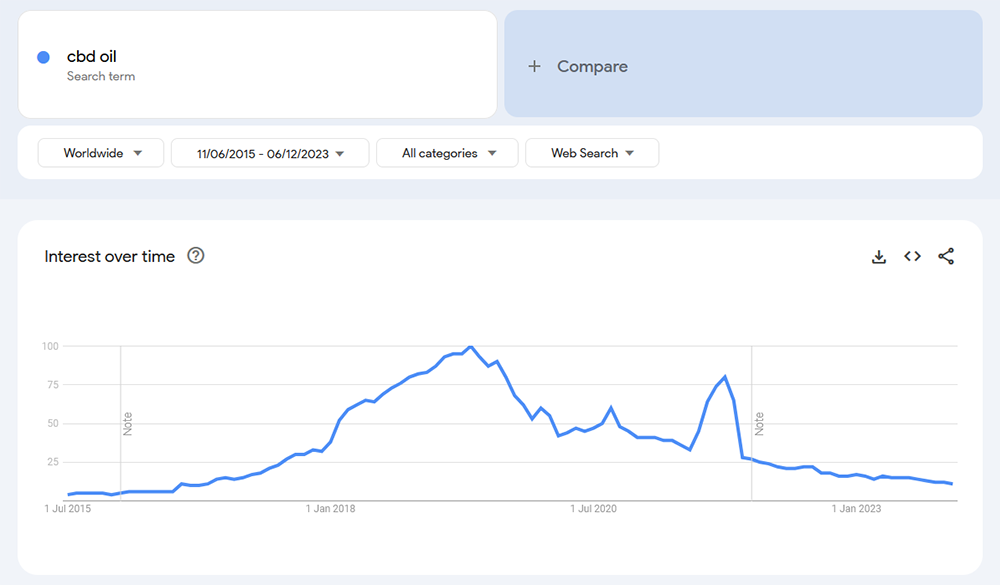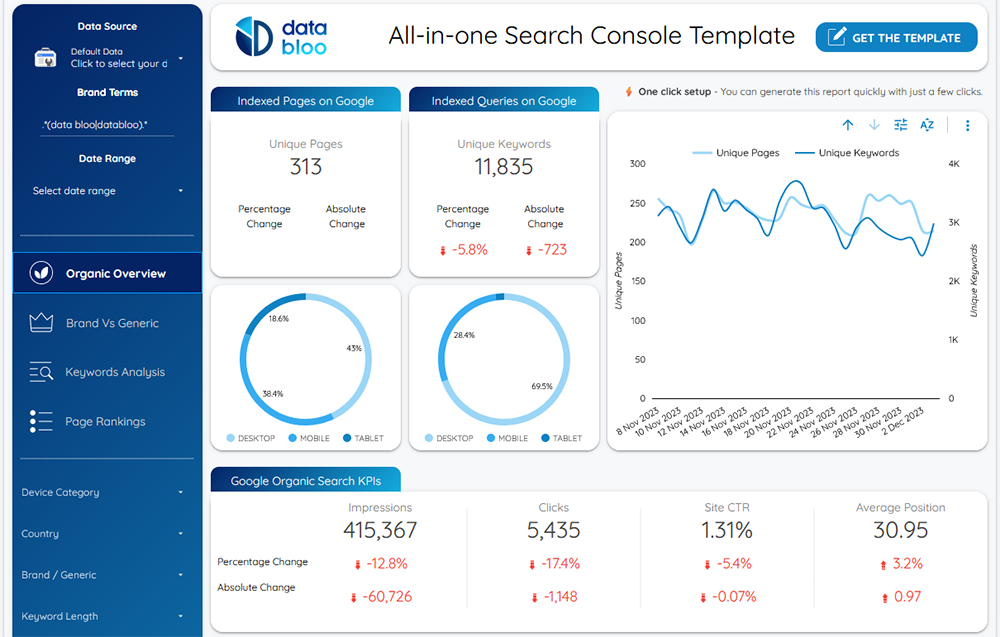SEO for startups today requires a much different approach compared to just five years ago. Especially if you wish to succeed based on the real value you provide, rather than just good luck.
It’s not just that many growing and emerging market niches are oversaturated; it’s also that, even if you’re the first to enter, you can soon expect a surge of competitors.
SEO for Startups – Checklist
1. Trend Analysis
Start with demand analysis: Before anything else, understand the market demand for your product or service. Use Google Keyword Planner to find out if your ‘next big idea’ is something people are already searching for. Or will you have to be a promoter.
However, don’t spend a lot of time on this. Instead, focus on identifying demand growth trends.
Trend analysis: Use Google Trends to find out if the demand is increasing.

Venture capitalists have a keen understanding of this concept: they invest where there is growing demand.
Pro tip: Beyond Google Trends (and other web analytics tools), pay attention to media coverage and public interest in your field. This insight helps in tailoring your content and marketing strategies to current and upcoming demands.
Focus on:
- Primary Keywords: These are ‘holy grail’ to many. However, you don’t want to ‘carry all eggs in one basket’.
- Secondary Keywords: That’s the sweetest plum! They generally rank faster, and there are a lot of them, so you don’t have to worry about the impact of losing one keyword.
- Growth Limit: Try to determine the maximum potential market size at its peak.
- Market Expansion: Explore complementary markets you can venture into. This is important because not everyone wants to be limited to what might end up to be a small niche, despite initial growth trends.
So do we do all of this to find out how much traffic will we get? That’s just the first KPI.
The second one is to estimate how you can monetize on these trends.
Trend analysis that doesn’t link traffic volumes with profits is – incomplete.
A simple formula: Lower estimates from Google Keywords Planner x 30% (traffic level if you rank at the top of page one) x 5% (solid conversion rate) x Your Margin
2. Aligning Your Team with SEO Goals
First you set goals and KPIs based on your keyword research and trend analysis. Than you present it to your team. What you want is that everyone is working towards the same set of goals.
The key reason for this approach is to ensure that your team and shareholders become active promoters of the startup. If they understand how they will personally benefit from the promotional efforts they contribute daily, it will motivate them to work harder.
3. Communication Strategy
A successful communication strategy needs to be clear and concise, and it should help prioritize the most important messages. Does this sound familiar?
Indeed, these tasks are closely interlinked with the selection of key phrases (or keywords, if you prefer) that a brand wishes to rank for.
Including SEO feedback (based on keyword research) into your communication strategy can help avoid bottlenecks and improve the consistency of the message across all channels, not just your website.
4. Branding
SEO has to understand the guidelines for content display. This aspect is frequently overlooked, with SEO often only considered after branding has made its final decisions.
When this comes to light early on in the branding process, it can be handled much more quickly and effectively, reducing any hold-ups further down the line.

5. Content, First and Foremost
Creating an eye-catching website might be an exciting prospect, which is probably why most start-ups focus on achieving this first and then loading it up with content.
Sadly, this approach is back-to-front.
Compelling content backed by research should always be created before you focus on web design since the content is infinitely more integral to your success than which colors or font your website is using.
The content should reflect the keywords you identified previously, while also resonating with your target audience.
6. Innovative Website Design
Build your website around your content, ensuring it’s not only aesthetically pleasing but also functional and user-friendly. Your website should capture your brand’s essence and be a platform for showcasing your unique content.

Read also: UX/UI Design in Digital Marketing
7. On-Page SEO Optimization
Even as a startup, you can’t afford to ignore the basics. Make sure that you website has perfect health and follows best practices. For this purpose, use PageSpeed Insights.
Read also: On-Page SEO: Ultimate Guide
But don’t stop there; it’s important to have a technical SEO checklist at hand to ensure all aspects of your site is bug-free, has a solid structure, and backend markup.
8. Digital PR
In 2024, generic PR campaigns no longer cut it. Especially having in mind what Google thinks about parasite SEO.
Focus on building genuine relationships with your target audience and stakeholders through personalized PR efforts. This way, your PR becomes an important part in building trust signals, which in turn will help you strengthen your organic ranking positions.
9. Learning and Adaptation
Like we didn’t know this already – the digital world is changing fast. This is why you need to be on top of latest SEO trends and algorithms, and be ready to adapt your strategies when needed.
10. Monitoring and Analytics
GA4 is the perfect tool to monitor your SEO performance. Your most important job is to review and adjust your strategies based on data you are getting. Also, it’s important to conduct periodic in-depth SEO audits to proactively implement changes, staying ahead of potential problems rather than fixing them after they have already caused damage.

Final Thoughts
SEO in 2024 is about understanding your market, creating valuable content, and building a website that mirrors your startup’s ethos and objectives. It requires a blend of creativity, technical know-how, and continuous learning. By adopting these strategies, startups can ensure their digital presence not only survives but thrives in the competitive online arena of 2024.
You might also want to check out our SEO packages, created for startups and early stage businesses.
- SEO and Link Building: Your Guide for 2024 - July 21, 2024
- Meta Tags: The Ultimate Guide for 2024 - July 3, 2024
- Implied Links in 2024: The Future of Measuring Website Authority - June 22, 2024